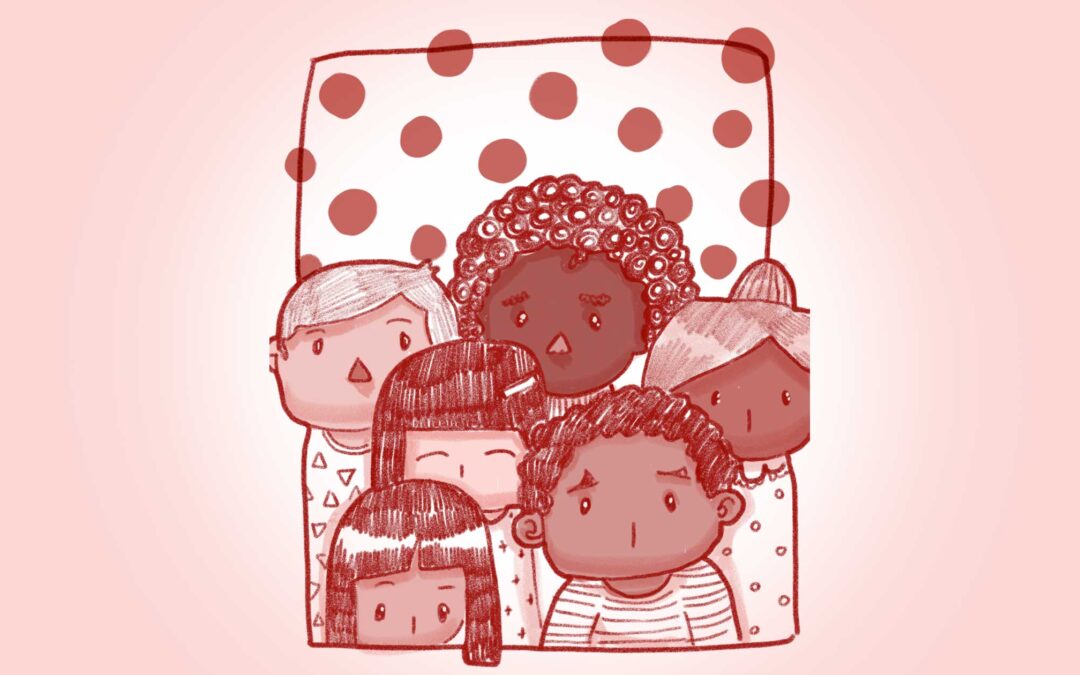Our differences unite us.
Teaching children about diversity, how we’re all different…. and the same, is incredibly important to their emotional growth. And it doesn’t just have educational benefits; teaching diversity has moral and social implications too!
You’ve probably already had this experience….
You’re walking through a department or grocery store and your youngster spies someone dressed in a way they’re not familiar with. Maybe this person is speaking in a language they’re not familiar with, or they have a physical or mental handicap. And so your youngster did that thing you were expecting and dreading. That thing that little people without egos or shame always seem to do. “What’s wrong with them,” your child asks in a nice, loud voice.
It probably only embarrassed you, but maybe, in the moment, you embraced a teachable moment.
Teaching young children to embrace the diversity that makes us all culturally unique and, at the same time, of equal importance, helps them to understand tolerance and respect for the human race. A tolerance and respect that can benefit them for a lifetime.
Diversity can relate to:
Culture: The global variety of customs and practices
Race: The uniqueness of skin color and physical characteristics that make us different.
Gender: The spectrum of gender identities beyond the traditional binary.
Ability and Disability Diversity: The variety of individual abilities and limitations.
Religion: Physical displays of various faiths and spiritual practices.
Economic and Social Diversity: Socioeconomic backgrounds and how they are displayed in public.
This array of diversity can be a lot for a child to wrap his head around, but each new teachable moment, and your encouragement for him to continue to learn and grow and sympathize, is really, really, really important in crafting a well-rounded future adult who loves and embraces his fellow humans.
You have the ability to break down stereotypes before they get the chance to form, and promote a sense of inclusion that embraces all the ways we’re the same while also celebrating our differences. We live in a globalized society, and it’s only getting more connected. By encouraging your children to embrace and understand diversity, you’re also giving them the right tools to function mightily out in the world.
So what are some parenting “best practices” when teaching diversity?Cultural Celebrations
Are there any cultural festivals happening near you? Seek them out! You’ll be surprised at how much fun your child (and you) can have when you participate in a street fair that’s all about a culture not your own. Exploring the traditions, music, food, and customs of different cultures together as a family shows your children that you care about, and celebrate differences, and, at the same time, exposes them to the variety and fun of our differences. Media Variety
Seeking out films and TV representations that embrace diversity, or spotlight a different culture, can have a (sneaky) positive effect on your child. Films like Encanto and shows like Sesame Street (50 years and running!) help children learn about the diversity of our world while they’re being entertained. Travel and Exploration
This one’s pretty obvious. Getting out and seeing the world will inevitably expose your children to its glorious diversity. Whether you’re traveling to another country, or to a Mexican supermarket, your child will be able to see, analyze and ask questions about the variety in the human experience. Wherever you choose to go, learning about diversity firsthand is incredibly enriching. Playmates
It’s rare these days for any neighborhood or city to be the homogenous groups they were in the past. People are moving farther and more freely and settling in new places than before, and our array of diversity right next door is all the better for it. So getting out to the playground, or meeting friends in the neighborhood who come from different backgrounds and experiences than ours is far easier than it used to be. Simply hanging around with playmates from other cultures and experiences will help your children understand how, in spite of our differences, we are the same. Talk It Out
There’s no such thing as a bad question, and encouraging open conversations about diversity with your children will answer their questions, address their concerns and explain complicated concepts to them in ways they can understand. You are their #1 trusted source of quality information and, as long as you’re keeping yourself educated, you’ll be there to help your children understand diversity in their world.
Teaching diversity and tolerance is your child’s path on the road to empathy and will give them more leverage in our global society. It’s an ongoing, potentially daunting, journey of discovery and understanding, but it’s one that should be constantly encouraged and nurtured. You’re investing in your child’s future by teaching them to celebrate and respect others.
Here’s a game to play with your child to help them learn about diversity:
Guess the Country:
Prepare flashcards with pictures and descriptions of children from various countries, as well as a few basic facts about each country. Children take turns drawing a card and trying to guess which country the child is from.
This is a game that not only teaches about diversity, but also about geography!

